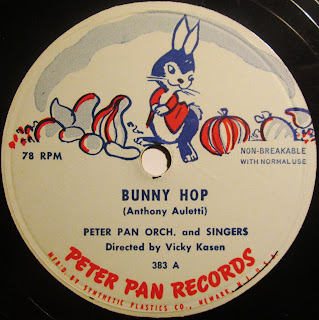As many of us know, thrift vinyl prices have gotten absurd, generally speaking (with the local Volunteers of America demanding $5.99 a pop (!), though at least one Goodwill in the nearest big city still sells at .99 each) However, if it's a good buy and the condition is good, I'll fork out $2.99, which I have done so far on (I think) three occasions. I did so with a near-mint copy of the Harmony label reissue of "The Grand Canyon Suite"--in monaural. The first and only mono copy I've ever come across. And $2.99 (a bargain) for Bobby Vee's marvelous The Night Has a Thousand Eyes LP, also near-mint and with a jacket in perfect condition. Also, for today's gem--Dionne Warwick's second LP, from 1964, and in mono. I actually prefer Top 40 music of this era in monaural. Not sure why, but in mono the tracks have more punch and presence. To my ears, that is. I can't speak for anyone else's (though I've often spoken into other ears).
And musicman1979 reminded me that I posted the mono Harmony Grofe reissue last year on July 4th: https://musicyouwont.blogspot.com/2024/07/fourth-of-july-music-grand-canyon-suite.html
This would have been up sooner, but it wasn't ready yet. (A little exercise in Police Squad! humor, there.) Problem was, I finally found the ideal analog-to-digital interface, but my initial experience was nothing but failed channels and a Line input which didn't accept a stereo signal. Being the infinitely patient and mature person that I am, I only screamed at the unit, oh, three times. Well, four. But no more than five times. Okay, six. And my yelling was closer to agonized screams. But I otherwise kept my composure (and saved my blood pressure). "Gear that doesn't work" might be a bigger anger trigger on my part than "Software That Fails." Close call.
Luckily, the Sweetwater rep was terrific, and together we did some highly detailed troubleshooting--whereupon, the flaw in the soup was the least likely item: the brand-new audio cables--the right side was defective. In five decades, and to the best of my memory (which isn't always the best), this is the first bad audio cable I've ever encountered. Seriously. Anyway, rep Barrett sent out (free of charge) two upgraded RCA-to-1/4" cables, and now all is fine. Well, except that VinylStudio doesn't let me know when and if I'm peaking the input. However, VS's peculiarities are nothing next to its many virtues, luckily. The software is so amazing, I have no right to nitpick.
Oh, and what about the album? Yes, today's offering. And it's magnificent! Purely fabulous (not faux-fabulous)! And, except for a slightly scratchy first band (which cleaned up nicely via VS's patching and manual-declicking features), in super-good shape. In short, worth five times the three-buck asking price. Not a bad song in the mostly Bacharach-David lineup, and Dionne has one of the most amazingly expressive voices in the history of pop music--and, to top things off, she always effortlessly managed Burt's quirky rhythms and his often jazz-complex melodic intervals. On the first takes, probably. I recall reading that, when Burt and Hal discovered Dionne, they knew they had the perfect interpreter. If they hadn't known as much, they'd have had to be drunk or otherwise impaired.
There's the great title song, Anyone Who Had a Heart, which I admire more each time I hear it, plus the just-as-magnificent Don't Make Me Over, the elegant I Cry Alone, and the should-have-been-a-monster-hit This Empty Place (maybe my favorite of the bunch). That possibly-greatest-all-of-Dionne-numbers had the unfortunate fate of serving as the B-side of Wishin' and Hopin' (terrific in its own right, but not as substantial as Empty). Luckily, Place was also memorably recorded by the Invasion bands The Searchers and Ian and the Zodiacs, meaning that someone realized the hit potential of this gem. How could anyone not be blown away by such a perfect pop release? I ask you. Should have been an A-side.
So, I changed the numbering (after exporting from VinylStudio), and I hope the proper numerals (1-12) show up--and the the jacket art, which I added in the Media Player app. Hope all goes as intended. I plan to get a VS upgrade, which should mean that I can add a year field per track. (Woo-hoo!) And Fab Forgeries, Pt. 7 is coming up next post.
DOWNLOAD: DW--Anyone Who Had a Heart.zip
TRACK LIST--All recorded 1963, unless otherwise noted
Anyone Who Had a Heart (Bacharach-David)
Shall I Tell Her (Doc Pomus-Mort Shuman)
Don't Make Me Over (Bacharach-David; rec. 1962)
I Cry Alone (Bacharach-David)
Getting Ready for the Heartbreak (Larry Weiss-Lockie Edwards)
Oh Lord What Are You Doing to Me (Luther Dixon-Burt Keyes)
Any Old Time of Day (Burt Bacharach-Hal David)
Mr. Heartbreak (Barbara English-Al Cleveland)
Put Yourself in My Place (Reggie Obrecht-William Drain)
I Could Make You Mine (Burt Bacharach-Hal David)
This Empty Place (Burt Bacharach-Hal David)
Please Make Him Love Me (Burt Bacharach-Hal David)
Anyone Who Had a Heart--Dionne Warwick (Scepter 517, rel. 1964)
Lee







.JPG)



































